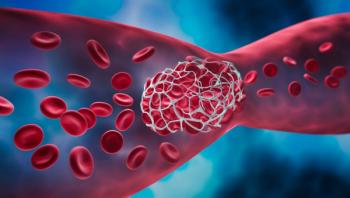
New FVIII Mutation Offers Insights for Future Hemophilia A Treatments
While prophylactic treatment is the standard treatment for severe hemophilia, its implementation can be complicated in patients who develop inhibitors
Researchers have
Hemophilia A is a genetic disorder where patients lack enough FVIII, a protein essential for normal blood clotting. Without enough FVIII, people can experience repeated bleeding episodes, often in the joints and muscles, which can cause long-term disability.
Current treatments focus on replacing the missing FVIII protein, but researchers have long been exploring whether naturally occurring mutations could provide alternative therapeutic strategies.
While prophylactic treatment is the standard treatment for severe hemophilia
However, BPA prophylaxis remains valuable, as it lowers the chance of repeated joint bleeds and helps prevent long-term joint damage, both while a patient is on immune tolerance induction (ITI) and if ITI does not work.
In this report, an 18-year-old man who had a long history of serious blood clots was featured. Genetic testing found a new mutation in the FVIII gene, called p.Arg590Ser, in part of the protein known as the A2 domain. Researchers named this mutation FVIII Aurora. Unlike most people with hemophilia A, who have trouble with too much bleeding, his blood clotted too easily, causing dangerous clots.
To study the effects of the mutation, researchers examined the patient’s blood plasma. They found that clotting activity of FVIII was much higher than normal—between 300% and 900%—even though the amount of FVIII protein stayed the same. This suggested the protein was overactive.
The team also performed calibrated automated thrombogram (CAT) blood tests, both with and without thrombomodulin, to measure how much thrombin was made. They also used a modified activated protein C (APC) resistance test to see how FVIII was controlled.
Results revealed accelerated thrombin production and abnormal reductions in thrombin when tested with thrombomodulin, which suggested resistance to APC. Whole-genome sequencing found that the Arg590Ser mutation was the only major genetic change. Computer modeling showed that this mutation made the A2 domain more stable and kept factor X active longer, which helps explain the unusually high FVIII activity.
These findings show that FVIII Aurora is a rare mutation that makes the clotting protein more than active. Unlike the mutations that cause hemophilia A, which make the protein weak or missing, this one works in overdrive. Researchers compared it to factor IX Padua, another natural mutation that has already been used in gene therapy for hemophilia B.
While Aurora caused harmful blood clots in this patient, it could still give researchers clues for developing new treatments for hemophilia A.
Although there are prominent findings, the study does have limitations.
For example, the report is based on just one patient, and the FVIII Aurora protein has not yet been made in the lab for testing. The research team is now working on making it so they can study how it works and whether it’s safe.
However, it helps researchers better understand FVIII and points to a new direction for developing treatments. It showed that natural gain-of-function mutations could one day be used to help people with hemophilia A.
Newsletter
Get the latest industry news, event updates, and more from Managed healthcare Executive.




















































